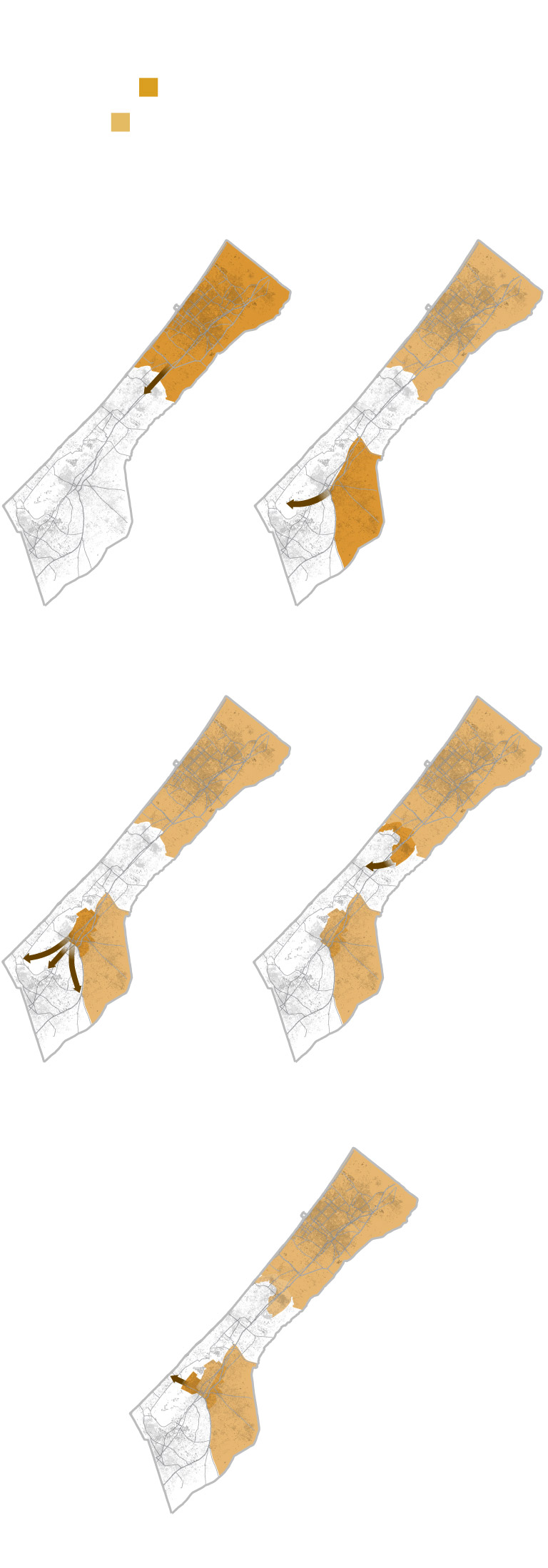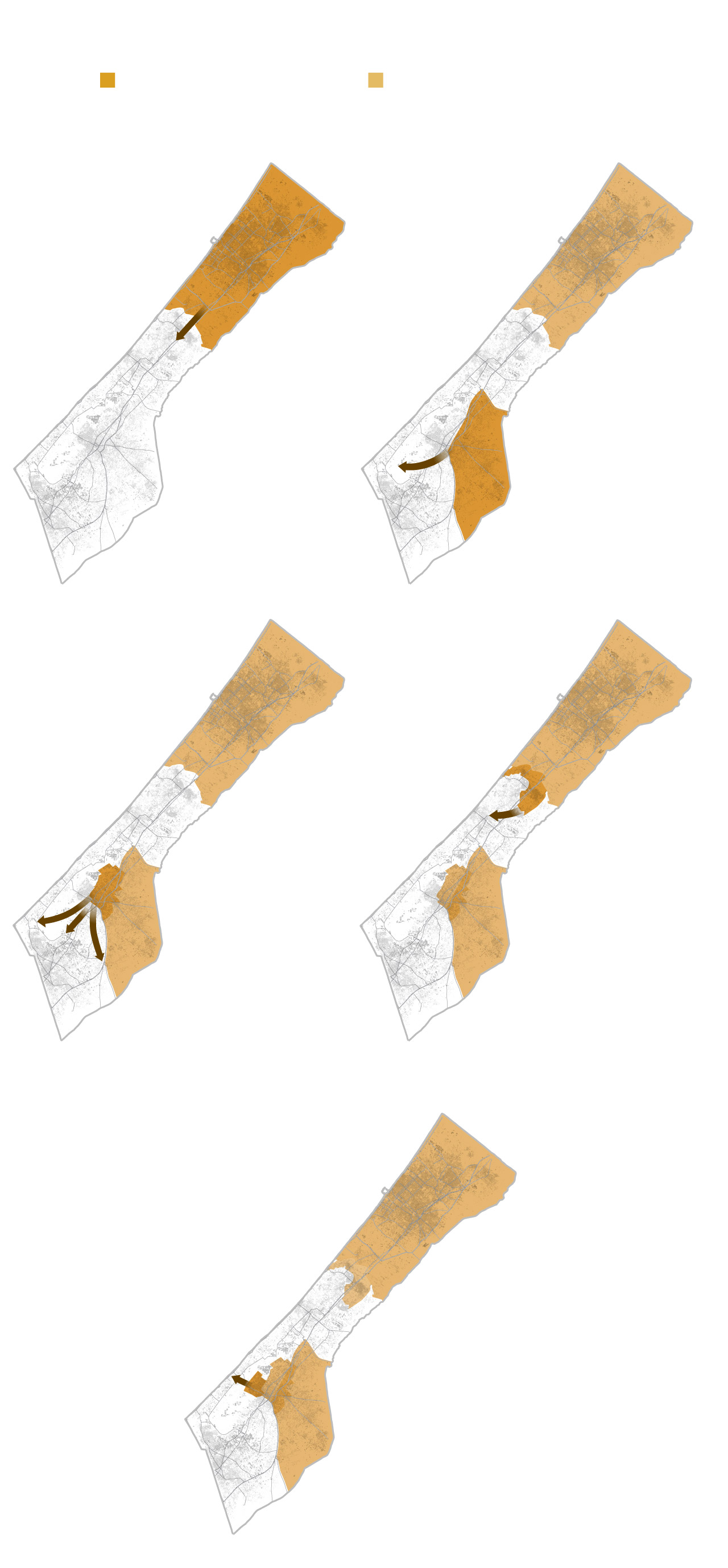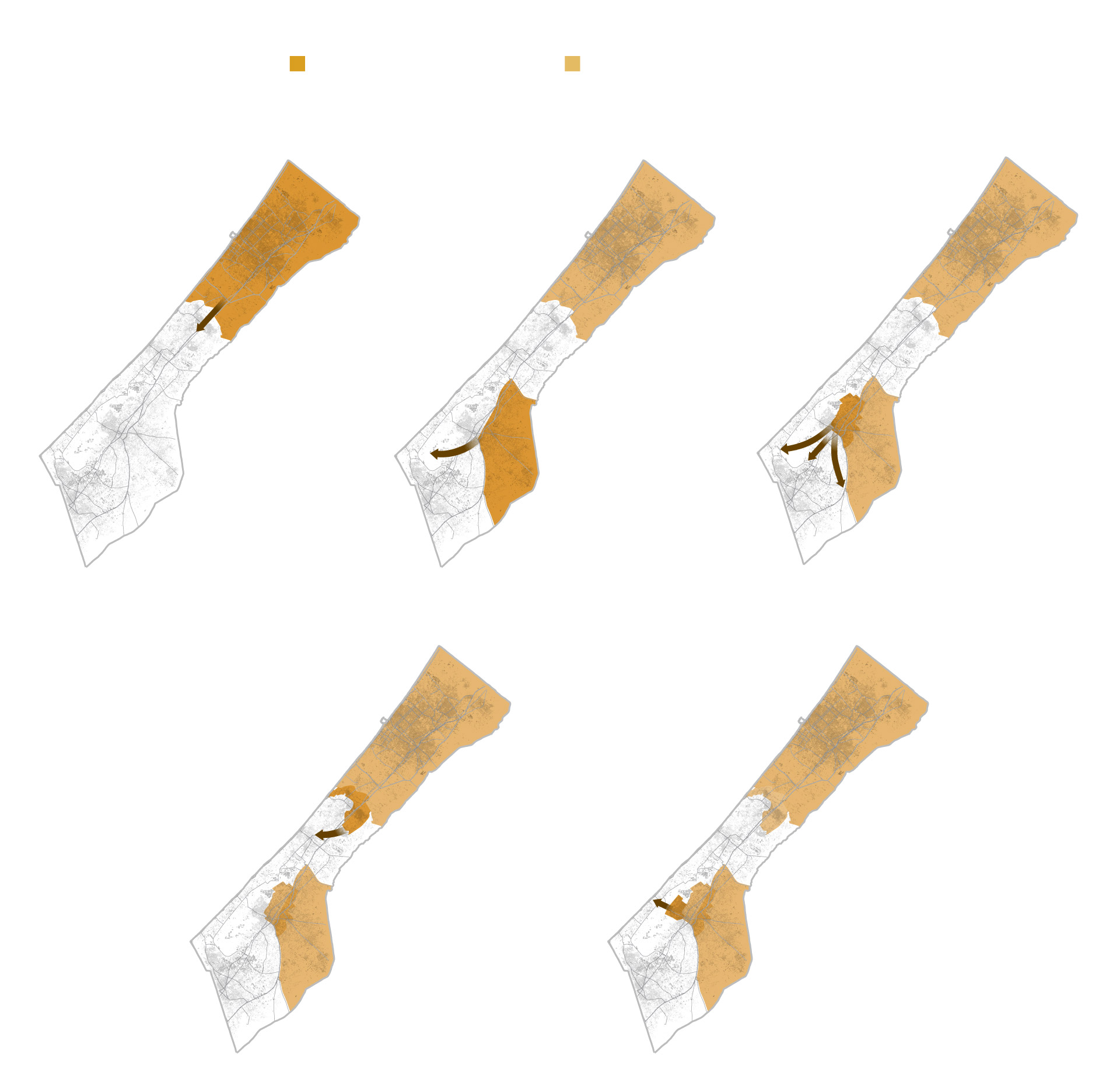Rafah, a small city in southern Gaza on the border with Egypt, was one of the last places of refuge during Israel’s war in Gaza, quintupling in population as displaced people from the northern parts of the strip sought safety.
Rafah was Gaza’s last refuge. The overcrowded city is now a target.
Israel’s military said it rescued two hostages from Rafah while carrying out a wave of strikes, which Gaza’s Health Ministry said killed at least 67 people.
Gazans reported heavy bombardment in the city, where an estimated 1.4 million Palestinians — more than half of the Strip’s total population — are sheltering. Many are sick or on the verge of famine, and aid groups say families are sleeping on streets and eating grass to survive.
“The loss of life we face if Israel goes down into Gaza is huge,” said Bob Kitchen, vice president for emergencies at the International Rescue Committee, a humanitarian relief organization operating in Gaza.
Israeli officials say the focus on Rafah is needed to complete its task of destroying Hamas, the Palestinian group that controls Gaza, after the group’s devastating Oct. 7 attack on Israel.
Almost 9 in 10 Palestinians in Gaza have been displaced
The population of Rafah has swelled to “at least” 1.4 million people, Juliette Touma, director of communications for the U.N. agency for Palestinian affairs, UNRWA, wrote in a message. “This is five times the population pre-war,” Touma said of Rafah, whose population was estimated at 280,000 before Oct. 7.
Israeli officials have not specified what their plans for Rafah look like. The country’s military has already conducted strikes in the area, including an airstrike that hit near the Kuwaiti hospital in the city in December that killed at least 18 people, according to hospital staff.
The war in Gaza has drastically reshaped the demographics of the strip. Almost 9 in 10 people living in Gaza are now displaced, according to U.N. estimates, while World Health Organization Director General Tedros Adhanom Ghebreyesus said on Wednesday that “over 100,000 Gazans are either dead, injured, or missing and presumed dead.”
Before Oct. 7, the most populated portion of the strip was Gaza City in the north.
- On Oct. 13, six days after the Hamas-led assault on Israel that began the war, Israel ordered the evacuation of more than 1 million people living in the areas above the Wadi Gaza wetlands. Many took refuge in Gaza’s second-largest city, Khan Younis, in the south.
- At the start of December, Israeli authorities ordered Palestinians in Khan Younis to move to new areas as Israel’s forces conducted military operations in the city.
- More than half of Gaza’s total population is thought to now be in Rafah, where many were “living in makeshift structures, tents or out in the open,” said Jens Laerke, a spokesman for the U.N. Office for the Coordination of Humanitarian Affairs (OCHA), adding that the city had become a “pressure cooker of despair.”

Timeline of evacuation calls
Area under evacuation
Previously under evacuation
Oct. 13
Dec. 2
Gaza City
GAZA
Khan
Younis
Khuza’a
Rafah
Dec. 3
Dec. 31
Rafah
Jan. 25

Timeline of evacuation calls
Area under evacuation
Previously under evacuation
Oct. 13
Dec. 2
Gaza City
GAZA
Khan
Younis
Khuza’a
Rafah
Dec. 3
Dec. 31
Rafah
Jan. 25

Timeline of evacuation calls
Area under evacuation
Previously under evacuation
Oct. 13
Dec. 2
Gaza City
GAZA
Khan
Younis
Khuza’a
Rafah
Dec. 3
Dec. 31
Rafah
Jan. 25

Timeline of evacuation calls
Area under evacuation
Previously under evacuation
Oct. 13
Dec. 2
Dec. 3
Gaza City
GAZA
Khan
Younis
Khan
Younis
Khuza’a
Rafah
Rafah
Dec. 31
Jan. 25
A mounting humanitarian crisis in Rafah
For those facing bombardment in the enclave, leaving Rafah is not a straightforward process. The area is home to the Rafah crossing, which joins the southern edge of the Gaza Strip to Egypt’s northern Sinai region, and Egypt is determined to avoid an exodus of Palestinian refugees, with concerns for the political and security repercussions.
The crossing — the only link from Gaza that Israel does not directly control — is open, but exits has been restricted to people who are able to secure spots on lists from embassies evacuating their nationals and affiliates, and people able to pay expensive fees to travel companies that facilitate movement across the border.
Humanitarian groups have warned that the amount of aid crossing the Rafah border is nowhere near enough to meet the needs of an increasingly desperate population.
“People in Gaza risk dying of hunger just miles from trucks filled with food,” Cindy McCain, head of the World Food Program, said last month in an appeal for new action to allow more trucks to enter Gaza.
One Palestinian aid worker, who spoke on the condition of anonymity as he was not authorized to speak publicly, wrote in a message that the widespread use of tents reminded him of stories his grandfather told him about the living conditions for refugees after the 1948 Israeli-Arab war. The tents, which can be up to 200 square feet in size, would house an entire family or two, the aid worker said.
Winter temperatures have added to the misery. “With this cold and rainy weather, the tent is the last place anyone would want to be in!” they wrote.
Sanitary precautions have broken down amid the overcrowding. “Thousands and thousands of people are sharing individual toilets,” Kitchen said, adding that IRC workers in Rafah had seen “queues of four to five hours” to use the bathrooms. Open defecation and urination create public health risks.
“We’re already seeing massive reports of acute watery diarrhea, which I think, if tested, would be proven to be cholera,” Kitchen said.
The humanitarian crisis is compounded by a political one, as at least 10 Western governments have suspended funding to UNRWA, the chief logistical force for aid in Gaza. The decision to halt funding came after Israel shared a dossier that alleged more than a dozen UNRWA employees had been involved in the Oct. 7 attacks on Israel and alleged widespread support for Hamas and other militant groups within the organization.
A previous version of this article incorrectly said Israeli Defense Minister Yoav Gallant posted his remarks about Rafah on X, formerly Twitter, on Friday. He posted on Thursday.
Niha Masih, Karen DeYoung and Rachel Pannett contributed to this report.

